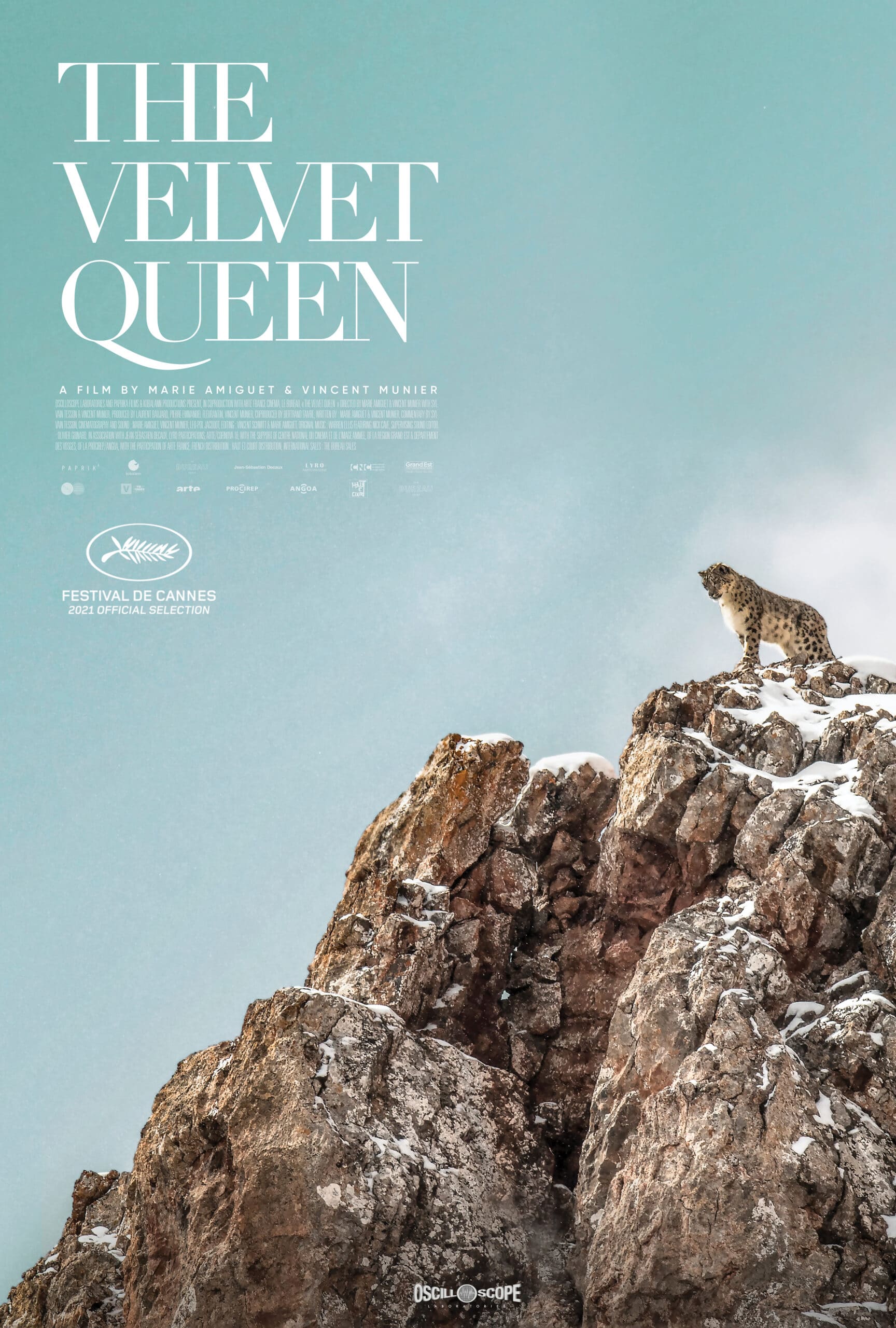The Velvet Queen, a documentary by Vincent Munier and Marie Ambiguet is an invitation into a hauntingly beautiful and intimate journey that explores chilling landscape, raw nature and almost unknown reality.
Despite its occasional intensity, the film is an almost dreamy experience that incites a certain wonder about one’s life and the world around them.
Vincent Munier and Sylvain Tesson, a French writer and traveller, set out into the Tibetan mountains with one main goal; to meet “La Panthere des Neiges”, also known as, the snow leopard in English. The two french explorers experience not only the intimate life of the wild but of a family who houses them during their weeks of searching.
This single mission transforms into a personal journey as well. The central characters question the way they have been living their lives. Their own questioning inspires the viewers to reflect on their own lives as well and internal questions arrive such as: are we really aware of our surroundings? Do we really notice the beauty around us and if so do we truly care for it?
As the film states, “You can’t cheat in nature,” it demands society to consider the ways in which we hide from certain truths and realities we may be uncomfortable with or may not even notice.
Embarking on this film is exactly that, it’s an exploration into the wild, with constant chills and gasps as the imagery and life fill it with wonder.
Much of the film is simple silent portrayals of landscape, yet despite this slow pace it never fails to captivate. The music and scenery are what carry the film and story through by creating a tone and setting unlike any.
The strong instrumental music that accompanies the vast mountain scenery enhances the chilling and magical effect of seeing such sights.
While the mountains are already dramatic with their deep crevasses, harsh edges and dim tones, the music heightens the feeling of amazement and engages a deeper wonder into what these rocks hold.
There is little left to the imagination as shots of birds, rabbits, foxes, wolves and bears all make appearances. Hunting, furrowing and gazing into the camera, the animals appear almost surreal with their animated faces and piercing expressions that are a rare sight in most people’s day-to-day lives.
Every sound is pronounced and every breath is felt. The music and filming allow for the animals to be portrayed in an amplified manner, yet they need no editing or manipulation to capture attention.
The animal’s natural strength is clear as the film captures their movements and activities. Their intelligence is obvious from their curious and knowledgeable eyes that continually meet the camera’s gaze.
The unsettling quiet of the mountains is soothing but even so, it screams with magnitude through the screen.
Part of the beauty of the film stems from its honesty. The animals hunt each other, they eat each other, they make noises that most would be terrified to hear if it wasn’t for the screen separating them. It also showcases the lives of those who live among the mountains.
The children who grow up in these mountains, grow up knowing the world in a way most couldn’t fathom. An unlikely but sweet and tender relationship forms between the children of this Tibetan household and the explorers. They manage to communicate and learn from each other despite vast differences in age, culture and language.
This film is made for the theatres. The mountains, animals and rural life it portrays are too big in themselves to be on a laptop or home TV. The mountains and animals documented merit the time and dedication of the brief but intense experience this film allows.









